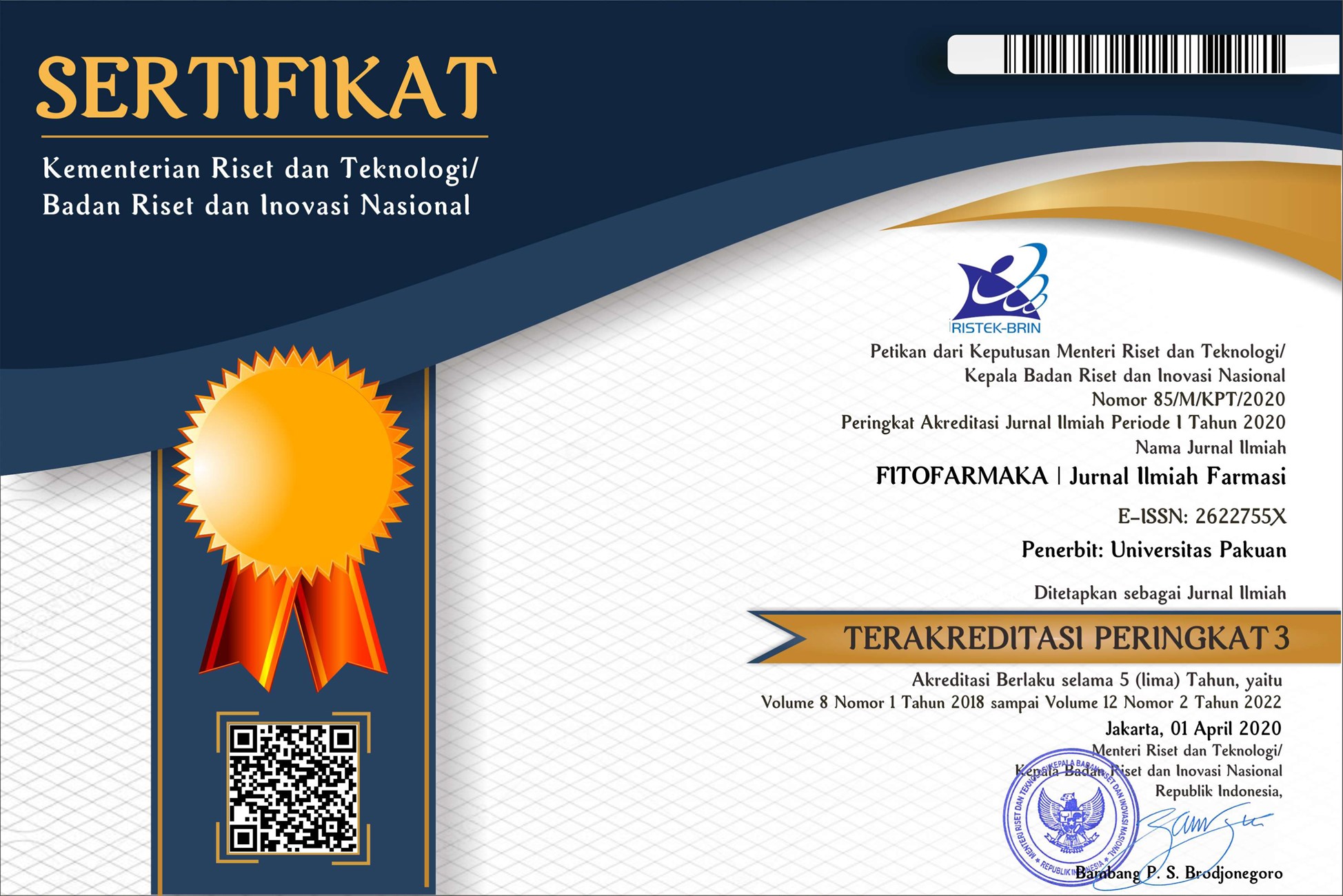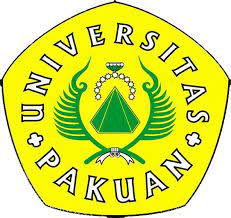Optimization of Temperature and Drying Time on Flavonoids Levels of Anjasmoro Variety Soybean (Glycine Max) Extract Using Response Surface Methodology
Abstract
Soybeans (Glycine max) contain a number of nutritional and health-supporting compounds, such as protein, fibers, phytosterols, and isoflavones. The pharmacological activities of soybeans include improving the immune system, acting as an antioxidant, inhibiting carcinogenesis, and reducing cholesterol levels. Anjasmoro variety is one of the superior varieties of large-seeded soybeans and is in great demand by farmers. The temperature and drying time of soybeans can have an effect on the level of compounds extracted. The aim of this research was to optimize flavonoid extraction from soybeans based on temperature and drying time using the response surface methodology (RSM). The results show that the optimal temperature and drying time of soybeans was obtained at 60.027 °C and 6.036 hours, with optimal flavonoid levels of 21.9707 mg QE/g. The verification results based on laboratory test confirmed that the level of flavonoids at optimal condition was 20.6461 mg QE/g, with a deviation of 6.03 % from prediction value and accuracy results of 93.97 %. The optimal drying temperature and drying time of soybeans can be used to obtain the highest flavonoid levels.
Keywords
References
Abd-Alla, H. I., Taie, H. A., & Abd-Elmotaleb, M. M. (2019). Comparative phytochemical and biological investigation of five Glycine max (L.) Merrill genotypes. Asian Journal of Pharmaceutical and Clinical Research, 12(2), 523-534.
Afiah, A., & Aprilla, N. (2023). PKM Olahan Kacang Kedelai Sebagai Upaya Peningkatan Kesehatan dan Perbaikan Pencernaan pada Masyarakat di Desa Rumbai Jaya Tahun 2023. Jurnal Medika Medika, 2(1), 59-64.
Ahmad, A., Hayat, I., Arif, S., Masud, T., Khalid, N., & Ahmed, A. (2014). Mechanisms involved in the therapeutic effects of soybean (Glycine max). International Journal of Food Properties, 17(6), 1332-1354.
Alam, M. N., Bristi, N. J., & Rafiquzzaman, M. (2013). Review on in vivo and in vitro methods evaluation of antioxidant activity. Saudi Pharmaceutical Journal, 21(2), 143-152.
Aryanta, I. W. R. (2023). Kandungan gizi dan manfaat tempe bagi kesehatan. Widya Kesehatan, 5(2), 25-32.
Chen, Q., Wang, X., Yuan, X., Shi, J., Zhang, C., Yan, N., & Jing, C. (2021). Comparison of phenolic and flavonoid compound profiles and antioxidant and α-glucosidase inhibition properties of cultivated soybean (Glycine max) and wild Soybean (Glycine soja). Plants, 10(4), 813.
Ferreira, C. D., Ziegler, V., Schwanz Goebel, J. T., Hoffmann, J. F., Carvalho, I. R., Chaves, F. C., & de Oliveira, M. (2019). Changes in phenolic acid and isoflavone contents during soybean drying and storage. Journal of Agricultural and Food Chemistry, 67(4), 1146-1155.
Hosea, K., & Kartodarsono, S. (2022). Pengaruh pemberian produk olahan kacang kedelai terhadap glukosa darah puasa dan resistansi insulin pada model tikus diabetes melitus. Medicinus, 35(3), 11-16.
Hsieh, C. Y., Tsai, J. R., Lee, C. J., Ciou, Y. R., Li, J. S., Tayo, L. L., & Tsai, P. W. (2022). Biological properties and phytonutrient profile of beans: Vigna angularis, Vigna radiata, and Glycine max. Biointerface Research in Applied Chemistry, 13(1), 53.
Jaya, J. S., & Das, J. L. (2019). Physiochemical analysis of three legume species Dolichos (Dolichos lablab), Glycine (Glycine max) and Arachis (Arachis hypogea). Plant Archives, 19(1), 1832-1838
Joshi, D. R., & Adhikari, N. (2019). An overview on common organic solvents and their toxicity. Journal of Pharmaceutical Research International, 28(3), 1-18.
Le, X. T., Lan Vi, V. L., Toan, T. Q., Bach, L. G., Truc, T. T., & Hai Ha, P. T. (2019). Extraction process of polyphenols from soybean (Glycine max L.) sprouts: Optimization and evaluation of antioxidant activity. Processes, 7(8), 489.
Malenčić, D., Popović, M., & Miladinović, J. (2007). Phenolic content and antioxidant properties of soybean (Glycine max (L.) Merr.) seeds. Molecules, 12(3), 576-581.
Oreopoulou, A., Tsimogiannis, D., & Oreopoulou, V. (2019). Extraction of polyphenols from aromatic and medicinal plants: An overview of the methods and the effect of extraction parameters. In R.R Watson (Ed.). Polyphenols in plants (pp 243–259. Massachusetts : Academic Press.
Pandey, A., & Tripathi, S. (2014). Concept of standardization, extraction and pre phytochemical screening strategies for herbal drug. Journal of Pharmacognosy and Phytochemistry, 2(5), 115-119.
Ramadhani, F., Surahman, M., & Ernawati, A. (2018). Pengaruh jenis kemasan terhadap daya simpan benih kedelai (Glycine max (L.) Merrill) varietas Anjasmoro. Buletin Agrohorti, 6(1), 21-31.
Shaikh, J. R., & Patil, M. (2020). Qualitative tests for preliminary phytochemical screening: An overview. International Journal of Chemical Studies, 8(2), 603-608.
Shi, J., Yu, J., Pohorly, J., Young, J. C., Bryan, M., & Wu, Y. (2003). Optimization of the extraction of polyphenols from grape seed meal by aqueous ethanol solution. Food Agriculture & Environment, 1(2), 42-47.
Shraim, A. M., Ahmed, T. A., Rahman, M. M., & Hijji, Y. M. (2021). Determination of total flavonoid content by aluminum chloride assay: A critical evaluation. Lwt, 150, 111932.
Tzanova, M., Atanasov, V., Yaneva, Z., Ivanova, D., & Dinev, T. (2020). Selectivity of current extraction techniques for flavonoids from plant materials. Processes, 8(10), 1222.
Woumbo, C. Y., Kuate, D., Klang, M. J., & Womeni, H. M. (2021). Valorization of Glycine max (Soybean) seed waste: Optimization of the microwave-assisted extraction (MAE) and characterization of polyphenols from soybean meal using response surface methodology (RSM). Journal of Chemistry, 2021, 1-12.
Yeop, A., Pang, S.F., Law, W.P., Yusoff, M.M., & Gimbun, J. (2019). Assessment of size reduction and extraction methods on the yield of gallic acid from Labisia pumila leaf via microstructures analysis. Materials Today: Proceedings, 19, 1280–1286.
Yusof, M.A. H., Abd Gani, S. S., Zaidan, U. H., Halmi, M. I. E., & Zainudin, B. H. (2019). Optimization of an ultrasound-assisted extraction condition for flavonoid compounds from cocoa shells (Theobroma cacao) using response surface methodology. Molecules, 24(4), 711.
DOI: 10.33751/jf.v13i2.9273
 Abstract views : 152
Abstract views : 152
Refbacks
- There are currently no refbacks.















